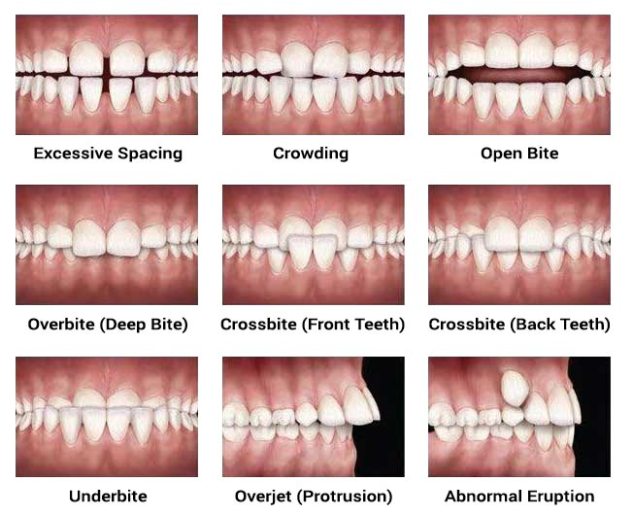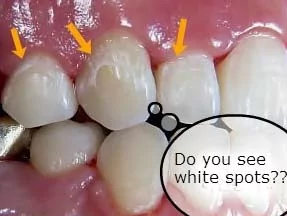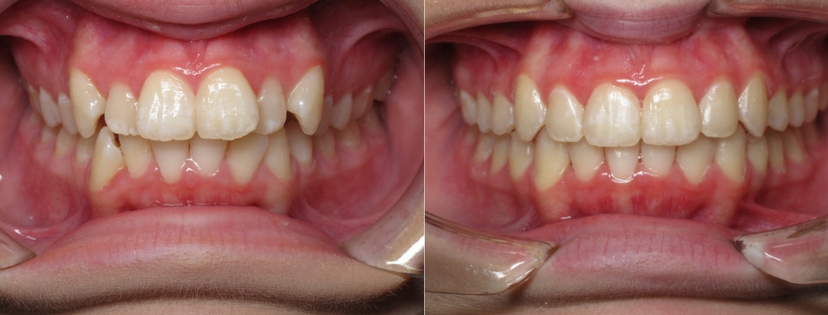There are many reasons to choose Invisalign over braces. These include: similar costs, better esthetics, no emergency visits and better soft tissue comfort. Align technology highlights all of the advantages very well. Amazingly though, there is still a better reason that Invisalign should be chosen over braces wherever possible. Invisalign offers the huge advantage of virtually NO PAIN. I personally self-treated with Invisalign and I was amazed that I experienced no pain. Hundreds of others that I treated reported the same thing and they remembered well the tooth soreness from prior braces treatment. Below is a picture of a patient who had Invisalign Teen. Treatment time was only 10 months. If this patient chose to do traditional braces, treatment time would have been 18 months. Having treated over 1,100 Invisalign patients, I can think of only a few who told me they actually felt soreness. I’ve treated nearly 20,000…
dental health
Why is expansion of my upper jaw necessary?

Great Question! Expansion is the process of creating growth change — usually to help alleviate crowding which most often prevents the need for extractions. Expansion also can correct a dental cross bite where the back teeth fit inside of the lower back teeth.Not all cross bites, however, require a growth change. Often, the back teeth are tipped to fit inside the lower back teeth. In this case, we simply need to upright the upper molars cheek-wise to make the correction. We make the decision on whether to expand by measuring the width of the upper front teeth and the width of the jaw at the upper 1st permanent molars. The upper jaw should be 35 to 40 millimeters for us to obtain a stable result. So we actually measure to make sure there is a proper proportionality. James McNomara has been teaching this diagnostic method since the late 1980’s and…
Do it Yourself Orthodontists…

Did you know that Smile Direct club was started in 2013 by four businessmen from Nashville, TN? Smile Direct club offers simple orthodontic treatment – limited to the front 6 teeth for mild crowding or spacing. The patient completes an online questionnaire and buys a $95 impression kit. They take their own impression and take 7 photographs of their teeth at different angles. The doctors who are employed by SDC submit the treatment plan to Align technology to make the aligners which are then mailed to the patient. The patient then orders retainers as well which are made by Align. Did you know that Align is the company that makes Invisalign? Here are the issues with SDC treated patients. The patient assumes responsibility for errors in impression taking. It takes a lot of training and practice to be able to take an error free impression. Impressions are less accurate than…
What is a Decalcification and Could you be Susceptible?

You may not realize it, but consuming carbonated beverages, fruit juice, and highly acidic foods every day can be harmful to your teeth! Acidic foods and drinks can create an oral acid imbalance, which over time can cause your teeth can lose minerals and strength. The acid in the foods we eat and drink pull the minerals, calcium and phosphate from tooth structure. The loss of calcium and phosphate from your teeth is called decalcification. The consumption of highly acidic food and drinks in combination with the accumulation of plaque (a sticky, colorless film of bacteria) on the teeth can make a person highly susceptible to decalcifications. Sometimes referred to as white spot lesions, decalcifications have a chalky-white appearance and can cause sensitivity as well as make teeth more prone to tooth decay. How to Prevent Decalcifications? Practice good oral hygiene by brushing at least 2 x per day and…
Are Dentists and Orthodontists the Same?

When it comes to getting your teeth straightened, you need to know the difference between dentists and orthodontists. It’s important to know that all orthodontists are dentists, but not all dentists are orthodontists. This is because the dentistry profession, like medicine, is divided into primary care dentists and specialists. All dentists attend college, usually for four years, then attend another four years of dental school. In dental school, they are taught the basics of several procedures, and learn to clean teeth, diagnose cavities and oral diseases, and do crowns, bridges, root canals, and silver and tooth-colored fillings. They also learn to perform a number of surgical procedures, make complete and partial removable dentures, and much more. Once they graduate from dental school and pass their clinical exams, they earn their licenses to practice as dentists. At this time, these dentists are called general dentists, general practitioners, GPs, or primary care…

